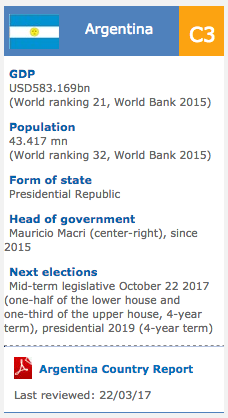Guinea: Guinea Art / Culture Profile
2012/03/13

Guinea is a West African nation, composed of several ethnic groups. Of these, the music of the Mandé has been particularly popular and internationally well-known, even outside of West Africa.
Guinea's Mandé are mostly Maninka-speaking. Music is dominated by the djelis, travelling singer-historians who sing praises to their noble patrons. In modern times, the guitar plays a very important role. Traditionally, popular instruments include the ngoni, a distant relative of the banjo, and the balafon. Famous balafon players include El Hadj Djeli Sory Kouyaté and, early in his career, superstar Mory Kanté. The kora, a cross between a harp and a lute, is also widespread.
World Heritage Sites in Guinea
- A World Heritage Site is a cultural or natural conserved site that the world community regards as having outstanding universal value. The United Nations Educational, Scientific and Cultural Organization (UNESCO) has designated 119 World Heritage Sites in Africa. These are in 39 countries (also called state parties), with Ethiopia, South Africa and Tunisia having the most with eight each, and eleven countries having only a single site.
- Three sites are shared between two countries:
- Mount Nimba Strict Nature Reserve (Côte d'Ivoire and Guinea),
- Stone Circles of Senegambia (Gabon and Senegal)
- Mosi-oa-Tunya / Victoria Falls (Zambia and Zimbabwe).
Each year, UNESCO's World Heritage Committee may inscribe new sites on the list, or delist sites that that no longer meet the criteria. Selection is based on six criteria for cultural heritage (i through vi) and four for natural heritage (vii through x).
Some sites, designated mixed sites, represent both cultural and natural heritage. In Africa there are 76 cultural, 39 natural and 4 mixed sites.
The first two sites, the Island of Gorée of Senegal and the Rock-Hewn Churches, Lalibela of Ethiopia, were inscribed in 1978.
UNESCO may also specify that a site is in danger, stating "conditions which threaten the very characteristics for which a property was inscribed on the World Heritage List".[3] Fourteen African sites have been defined as in danger, accounting for 12% of the African sites and one short of half the total endangered sites
Islam in Guinea
2005 official statistics for Islam in Guinea estimate that 85% of Guinea's 7.8 million people are Muslim. Most are Sunnis who follow the Maliki legal tradition and Qadiri and Tijani Sufi orders. Ahmadiyya Muslim Community is also present.
Although the French established a colony in 1891, their control of the region was weak. After independence in 1958, the nominally Muslim Marxist president Sékou Touré discouraged Islamization, only after his popularity waned in the 1970s did Touré seek to co-opt Muslim institutions to legitimize his rule. Since Touré's death in 1984, cooperation between the Muslim community and the government has continued.
- Guinea News
-
- GUINEA: Deadly Riots Again Grip Guinea’s Bauxite Hub
- CHINA: China to Loan Guinea US$20 Billion for Access to Bauxite Reserves
- CHINA: China to loan Guinea $20 billion to secure aluminum ore
- AFGHANISTAN: UNWTO: International tourism – strongest half-year results since 2010
- BOTSWANA: Why governments need to support the financial sector to meet the unserved needs of smallholder farmers
- BOTSWANA: International Arrivals To Africa Reach More Than 18 Million In 2017
- Trending Articles
-
- SOUTH AFRICA: Nigeria and South Africa emerge from recession
- BAHRAIN: Bahrain issues new rules to encourage fintech growth
- ARUBA: Director of Tourism Turks and Caicos after Irma: Tourism, visitors, hotels current status
- ANGOLA: Angola: Elections / 2017 - Provisional Data Point Out Qualified Majority for MPLA
- WORLD: How fair is our food? Big companies take reins on sourcing schemes
- CHINA: Russian firm seals energy exploration deal to drill South African shelf













